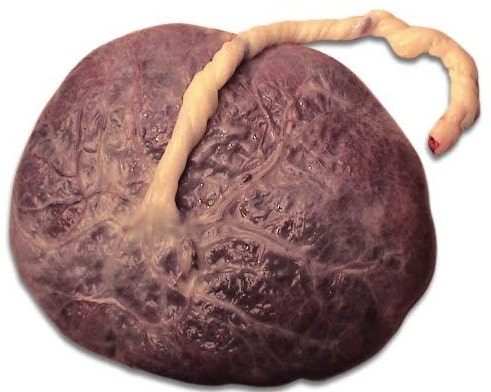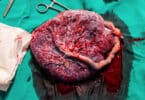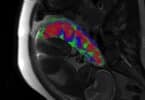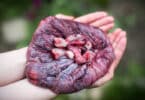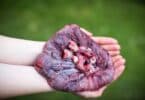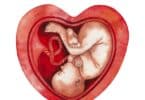After giving birth to her daughter, one mom’s husband dutifully prepared her first postnatal meal. No vegetables or condiments, just a cup of tea and a plate of what looked like chopped steak fried in olive oil.
Tentatively, she took a bite, chewed and swallowed rather quickly to avoid thinking too much about what she was eating. ‘It tasted a bit like a rich, gamey meat,’ the new mom told the said. ‘I can’t say I particularly enjoyed it. I treated it a bit like you do medicine – something to get over and done with swiftly – but it was no big deal.’
“There is no way of knowing for sure if eating my placenta did help prevent post-natal depression or whether it was the placebo effect. But what I do know is that I suffered no baby blues whatsoever and healed very quickly after the birth. It wasn’t something I planned do to do, but the idea grew on me. I was eight months pregnant at an ante-natal yoga class and one of the mums mentioned that some women eat their placentas to prevent post-natal depression,” she said.
‘My initial reaction was like anyone else’s, not exactly disgust, but that it was just something I could never do. Then I started to do some research and suddenly the idea didn’t seem quite so absurd.
Most women would probably regard the prospect of eating their placenta – a practice called placentophagia – at best ridiculously ‘earth motherish’ and at worst faintly repellent.
But there is a small band of mothers who believe that it can yield health benefits and help prevent post-natal depression.
Normally, the placenta or afterbirth, part of the ‘foetal supply line’ through which nutrients and blood pass via the umbilical cord, is treated as medical waste, bagged, binned and incinerated. However, some cultures venerate this ‘interface’ between mother and child, imbuing it with real or symbolic qualities.
Rich in nutrients, iron, zinc and vitamins, there is a longstanding belief that the placenta – which until the birth delivers these nutrients to the unborn baby – reduces the incidence of ‘baby blues’ and shortens post-partum bleeding in the new mother.
Not that these beliefs hold much truck with doctors. Consultant obstetrician Maggie Blott, spokeswoman for the Royal College of Obstetricians and Gynaecologists, dismisses the post-natal depression theory, saying there is no medical justification at all. ‘Animals eat their placenta to get nutrition,’ she says, ‘but when people are already well nourished, there is no benefit, there is no reason to do it.’
Yet, there are mothers who remain convinced of the placenta’s therapeutic qualities, a belief which nutritionist Patrick Holford, author of Optimum Nutrition Before, During And After Pregnancy, says ‘makes a lot of sense’.
He believes that pregnancy, birth and breastfeeding put a nutritional strain on a new mother’s body and psyche which could be eased by the nutrients found in the placenta.
‘The placenta is a rich source of nutrients, particularly zinc and vitamin B6, and some women who get post-natal depression do so because their diet is lacking in essential nutrients, especially these ones,’ he says.
‘The early breast milk – colostrum – is very high in zinc, which has to come from the mother, but most women consume only a third of the zinc they should. A lack of zinc and vitamin B6 in the diet is a major cause of depression.
‘Every animal eats its own placenta, and in China the nutritional power of the placenta is held in high esteem and is highly sought after.’
The practice of eating placentas became fashionable in the West in the Seventies among so-called ‘earth mothers’, but its popularity has since declined although there now appears to be something of a revival.
I have to say that in ‘theory’ this sounds like an okay idea, but I saw my placenta and there is NO way that thing was going anywhere near my mouth!!!! I would have taken a B6 shot before I ate anything that came out of my body.
*Recipe’s are also available online for preparing placenta including lasagna, spaghetti bolognaise, or placenta paté.*

